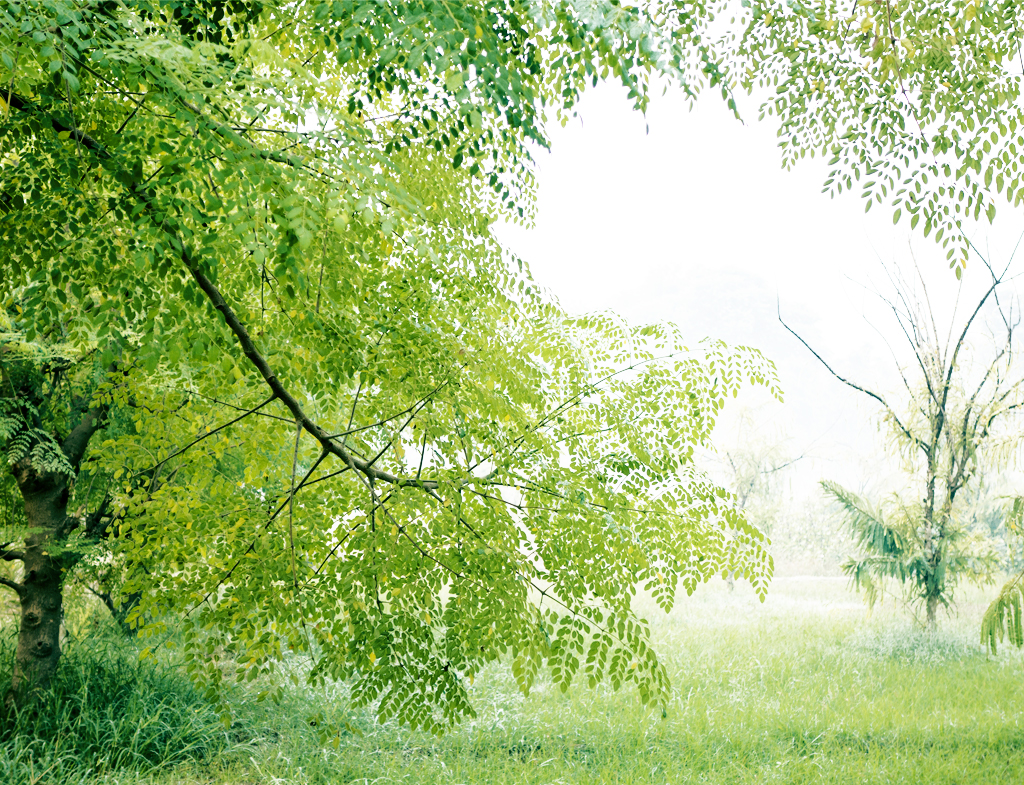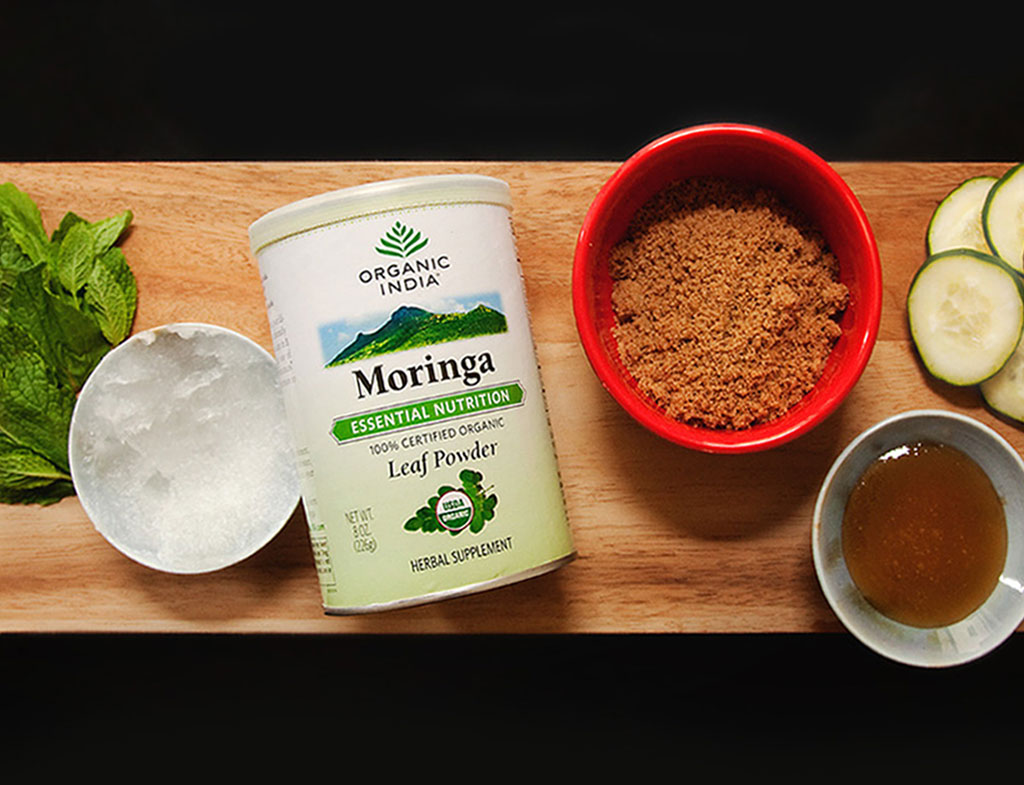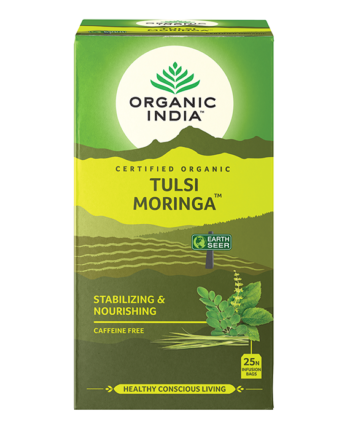What would you bring to a deserted island if you knew you were going to stuck there for some time? Your mobile? Probably not, as it would go flat in a few hours! A favourite book? Possibly. How about one of the most nutrient-rich plants on earth? Well now, that seems like a good idea.
You might know this plant by its official name: moringa oleifera or its more common name, Moringa. It’s green, it’s nutritious and most of its parts are edible. You can use it as a powder or as a tasty addition to an exotic cuisine.
This nutrient-dense superfood contains all 18 amino acids – the building blocks of protein – along with essential minerals and vitamins, including an abundance of B vitamins. Gram for gram* Moringa contains:
- 7x the Vitamin C of oranges
- 4x the Calcium of milk
- 4x the Vitamin A of carrots
- 3x the protein of lentils
- 3x the Potassium of bananas

Here are our 6 favourite things we’ve discovered about Moringa
1. Moringa has many different names
Its most common name, moringa, comes from the Tamil (an ethnic group from South Asia)word murungai, which means twisted pod, referring to fruits from the moringa tree. Moringa is also known as the drumstick tree, a horseradish tree or a benzoil tree and is native to Asia and Africa. There are 13 different species of moringa but moringa oleifera, the species we’re discussing here, comes from north-western India and the foothills of Himalayas.
The tree of life, mother’s best friend and the miracle tree are other nicknames given to Moringa for the benefits believed of this plant. The different names of moringa testify of its popularity across the world.
2. Moringa is one of the most nutritional plants that we know
Moringa is widely used by many humanitarian organisations in the developing countries to help fight famine, malnutrition and poverty. Traditionally, Moringa has been given to nursing mothers and newborn babies because it is believed to boost the quantity of mother’s milk. Moringa is believed to have:
- Vitamins: vitamin A (improves vision, reproduction, immunity, brain function), vitaminC (antioxidant properties, boosts absorption of iron, lowers cholesterol), vitamin E(especially α-tocopherol, with antioxidant properties), vitamins B (thiamine, riboflavin and niacin)
- Minerals: magnesium, calcium, potassium, iron, zinc, and phosphorous
- Protein: essential for the body’s growth, maintenance and repair
- Essential amino acids: the building blocks of protein
- Tannins (anti-inflammatory, antibacterial properties, amongst others)
3. Moringa has been traditionally used in Ayurveda for thousands of years
The history of Moringa goes back to 150 B.C. Ancient kings used moringa for its skin benefits and as a mood booster. Moringa was believed to provide energy, mental boost, and help relieve stress levels. The Romans, the Egyptians, and the Greeks extracted the oil from the seeds and used it in skin lotions and perfumes.
Moringa use is perhaps known best in India, where it was extremely popular in Ayurveda (the ancient Indian wellbeing practice) for over 300 different conditions ranging from asthma, anxiety, cholera, diarrhoea, eye and ear infections, skin diseases, cuts, bruises, respiratory disorders, psoriasis, headaches and tuberculosis amongst others.

4. A lot of people are taking note of Moringa
With antioxidant, anti-inflammatory, antimicrobial, antibiotic, and antibacterial properties, modern science is now researching Moringa, testing some of its traditional uses using science-based studies. One of the most commonly cited moringa benefits is slowing the progression of Alzheimer’s disease. And there’s beginning to be some evidence that it can help. A 2011 review of plant-extract studies, published in the Journal of Neurosciences in Rural Practice, found that the anti-inflammatory and hypotensive effects of moringa oleifera could enhance memory and that rats who were given moringa extract. This showed improved the electrical activity and levels of brain monoamines (norepinephrine, dopamine, and serotonin).*
5. Moringa leaf powder is made from dried moringa oleifera leaves
The most nutritious part of the Moringa plant is its leaves and is most commonly used for supplements on the market. The fresh moringa leaves are harvested from the trees and then dried at low temperatures. The procedure is quite strict: the leaves are dried and hidden from direct sunlight, the only way to properly preserve nutrients.
- Moringa tea: the dried leaves are shredded
- Moringa powder: the dried leaves are crushed into a soft powder. One kilogram of powder is made from approximately 15.4 kg of fresh moringa leaves
6. You can cook with or drink Moringa
The leaves of moringa may be the most commonly used part of the moringa tree, but that doesn’t mean that the other parts of the moringa plant are not useful: leaves, bark, fruits and roots. In fact, choosing between cooking bark or steaming leaves often depends on each local cuisine and tradition. In Western countries, we’re most familiar with moringa leaf powder or consuming moringa in herbal teas. In Thailand, for instance, immature moringa pods, or drumsticks, are added to curries. Moringa leaves can also be used in place of coriander, as a garnish, or in clear soups, as done in the Philippines.
Whichever method of consuming moringa you may choose, there’s little debate about Moringa’s high nutritional value. Not only is it a natural, plant-based source to help fight malnutrition but due to moringa’s high nutritional profile, it’s becoming a popular dietary-supplement across the world.
*USDA Nutrient Database for Standard Reference
Claims not validated by the MPI. These products are not intended to diagnose, treat, cure or prevent any disease.
THIRSTY FOR MORE? YOU’LL LOVE THESE ARTICLES…
Subscribe to our newsletter
Subscribe to our newsletter for up-to-date news, new products and special offers. Be apart of our beautiful community inspiring True Wellness for all.


